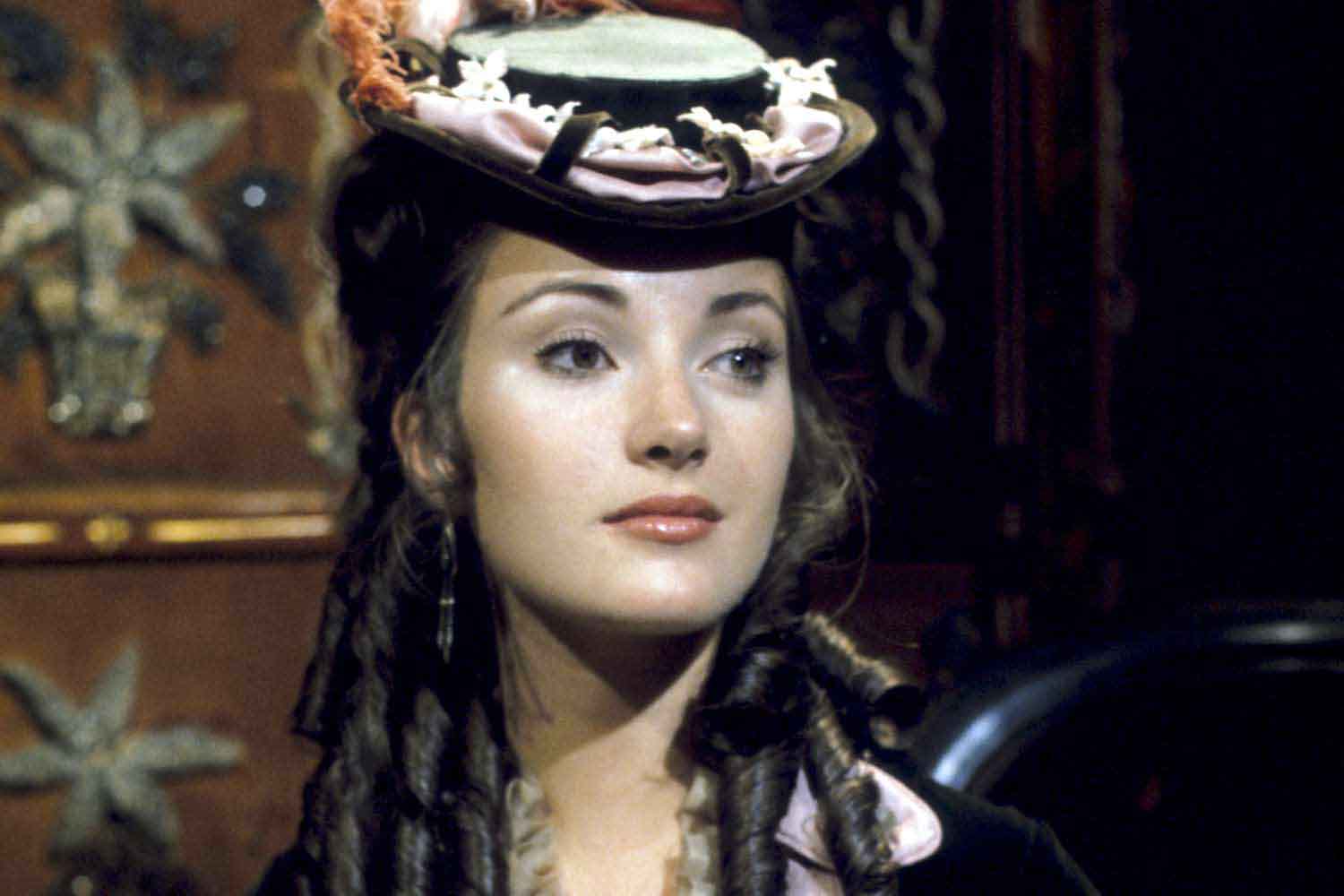The Early Artistic Path of Jane Seymour Before Hollywood Fame
Every recognized star in the arts has a story, a beginning that shaped their future. For an actress who has shown remarkable talent and grace for decades, understanding her first steps offers deeper appreciation for her artistry. The years before Jane Seymour rose to fame in Hollywood were filled with lessons and challenges that forged her into the performer admired across the world today. To truly grasp the extensive scope of her contributions, it’s illuminating to explore her overall career timeline.
Summary:
Jane Seymour’s early years were marked by discipline, artistic growth, and resilience. From ballet training at the Royal Ballet School to her first acting roles in Britain, each stage prepared her for the global stage. Her early experiences reflect dedication, adaptability, and a deep understanding of the performing arts that guided her toward international recognition.
Formative Years in the Performing Arts
Before Jane Seymour became a household name in film and television, her artistic journey started with ballet. These early experiences were crucial to building the discipline, emotional range, and storytelling ability that would define her acting later on.
Born as Joyce Penelope Wilhelmina Frankenberg in Hillingdon, England, she displayed a love for the arts from a very young age. Her childhood revolved around music, dance, and drama, a combination that revealed her natural inclination toward performance. Encouraged by her parents, she joined the prestigious Royal Ballet School, where she spent several years mastering the demanding art of ballet. This early dedication to performance provides insight into her artistic passion from the very beginning.
Her ballet training did more than teach movement and balance; it trained her to communicate emotion without words. Through precise motion and expression, she learned to tell stories on stage, a foundation that would later translate beautifully to screen acting.
Unfortunately, a severe knee injury ended her dream of becoming a prima ballerina. Yet, this pivotal turning point did not halt her creative spirit. Instead, it deftly redirected her energy toward another potent form of artistic expression, acting.
Transition from Ballet to Acting
After leaving ballet, Jane Seymour began searching for a new path where she could channel her passion for performance. Acting became that path. Although moving from dance to acting required a distinctly different skill set, her intensive training in ballet gave her a strong sense of discipline and emotional control, both immeasurably valuable to her new craft.
In the early years, she attended workshops and auditions tirelessly, eager to learn and grow. Her initial appearances in British television and film were modest but profoundly meaningful. Each project helped her understand the nuances of working with the camera, mastering timing, and the vital art of collaboration, skills that extended far beyond mere physical performance. These experiences became her foundational training ground, where she absorbed the technical and creative aspects inherent in filmmaking.
Throughout this period of exploration, she consistently proved her remarkable adaptability and fierce determination. The unique combination of grace from her ballet years and her rapidly growing command of dialogue and emotion made her stand out distinctly among her aspiring contemporaries.
Breakthrough Roles and First Major Performances
Jane Seymour’s first significant screen role came in “The Only Way” (1970), a British drama where she portrayed Lilian Stein. The film offered her a compelling chance to explore complex emotion and truly showcase her burgeoning range as an actress. Though it wasn’t a major box-office hit, it provided invaluable on-set experience and exposure to seasoned actors and directors, refining her craft.
Her true international breakthrough arrived three years later with the James Bond film “Live and Let Die” (1973), where she played Solitaire, a psychic entangled in espionage and danger. The role brought her worldwide attention and clearly demonstrated her ability to portray both compelling strength and poignant vulnerability. This iconic performance is considered among her best roles, marking a pivotal moment in her early career.
In this film, she perfectly balanced an aura of mystery with profound emotional depth, a combination that resonated powerfully with audiences across continents. It wasn’t just a career milestone; it was her definitive introduction to a global audience, showcasing her distinct capacity to thrive in large-scale productions with extremely high expectations.
This performance opened numerous new doors and firmly established her as one of Britain’s most promising talents on the global stage.
Continuing Work in British and European Productions
Despite gaining significant worldwide attention from her Bond film, Jane Seymour did not immediately relocate to Hollywood. Instead, she judiciously chose to continue refining her craft in British and European cinema, where storytelling often focused more intensely on character depth and subtle emotional expression.
This period was absolutely vital for her artistic development. It allowed her to experiment with various roles without being confined to a single type of character. One notable performance during this time was in “Sinbad and the Eye of the Tiger” (1977), where she portrayed Princess Farah. This fantasy adventure demanded both considerable physical stamina and vivid imagination, requiring her to act convincingly in scenes filled with groundbreaking special effects and mythical creatures.
Her portrayal added remarkable warmth and realism to the story, unequivocally proving her ability to carry different genres with an inherent grace. Working in diverse productions across Europe helped strengthen her range and firmly established her as a truly versatile actress capable of adapting seamlessly to different filmmaking styles and audiences.
Television Projects and Expanding Reach
In addition to film, Jane Seymour actively pursued opportunities in television, which was becoming increasingly influential during the 1970s and 1980s. Television miniseries and dramas allowed her to develop characters more deeply, giving her the rich chance to portray layered emotions over extended storylines, a challenge she readily embraced.
British television was renowned for its consistently high standards and rich, character-driven storytelling. These productions gave Seymour a valuable platform to continue evolving as an artist, working alongside talented writers and directors who deeply appreciated her dedication and extensive range.
Through these varied roles, she meticulously learned to balance theatrical expression with on-screen subtlety, a delicate balance few actors achieve so effortlessly. Each appearance meticulously contributed to building her credibility and thoroughly prepared her for Hollywood, where television also played a major role in shaping lasting, iconic careers.
This stage of her journey not only refined her acting technique but also significantly expanded her recognition across Europe and far beyond its borders.
Lessons from Early Training and Experience
Jane Seymour’s early years before Hollywood unequivocally highlight the profound value of rigorous early training and diverse, hands-on experiences. Her deep background in ballet ingrained qualities that seamlessly became her professional strengths: precision, emotional control, and the innate ability to tell a compelling story through fluid movement.
These invaluable traits translated seamlessly into her acting career. Her first roles in British television and film offered her crucial opportunities to apply and extensively expand those burgeoning skills. From serious, contemplative dramas to imaginative fantasy adventures, she consistently demonstrated remarkable adaptability, unwavering consistency, and an unyielding artistic integrity.
Each production, no matter how small or large, served as a crucial stepping stone, systematically reinforcing her confidence and solidifying her artistic identity. Mistakes became invaluable lessons, and successes fueled her unwavering determination to progress even further.
Her development was not merely a pursuit of fleeting fame but a profound journey toward mastery of her craft. The rich European film environment, with its strong focus on character and authenticity, allowed her to grow in distinct ways that would later uniquely distinguish her acclaimed performances in Hollywood.
Foundation for a Global Acting Career
Every small role Jane Seymour accepted meticulously contributed to the robust foundation of her eventual international career. From performing in local British productions to starring in films that reached vast audiences worldwide, she systematically built a sterling reputation for professionalism and remarkable versatility.
Her compelling performance in “Live and Let Die” introduced her to a truly global audience, but her earlier, unwavering dedication to learning and constantly improving made that significant success not only possible but inevitable. Her admirable willingness to take on vastly different roles, engage with new languages, and master diverse genres strikingly reflected her global perspective and inherent adaptability, singular qualities that unequivocally set her apart from many contemporaries.
By wisely choosing to remain in Europe for several formative years before fully transitioning to Hollywood, she ensured that her artistry and personal growth came before immediate commercial fame. This patience unequivocally paid off. When she eventually entered the American entertainment industry, she did so with the profound depth and quiet confidence of a truly seasoned and accomplished performer.
Resilience, Growth, and the Making of a Star
Jane Seymour’s story before Hollywood fame is undeniably one of extraordinary resilience and profound passion. From a young ballerina in England to a respected actress gracing international screens, her path reflects unwavering perseverance and an enduring love for the craft.
Her early challenges, particularly the heartbreaking end of her ballet dream, never truly defeated her. Instead, they skillfully redirected her formidable creative drive. Each new opportunity, no matter how seemingly small, was met with full commitment and an exemplary level of professionalism.
These formative experiences meticulously formed the incredibly strong foundation upon which her celebrated global career stands today. The invaluable lessons learned from her British and European years gifted her a unique edge, shaping her into an artist respected not only for her timeless beauty and undeniable charisma but also for her unwavering discipline, remarkable versatility, and profound authenticity.
Her early life serves as a powerful reminder that great artistry often begins quietly, meticulously built through years of dedicated effort and persistent growth long before the dazzling spotlight finally arrives. For those interested in her comprehensive achievements and detailed background, her detailed biography offers a deeper dive into her storied career.

